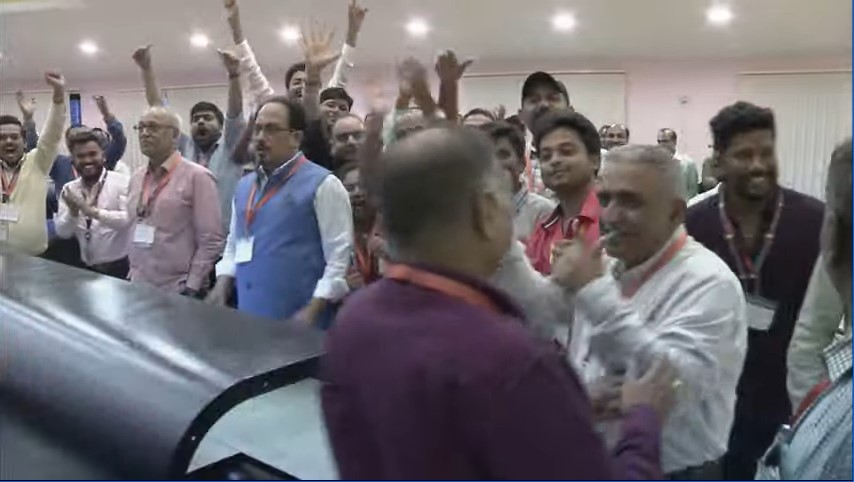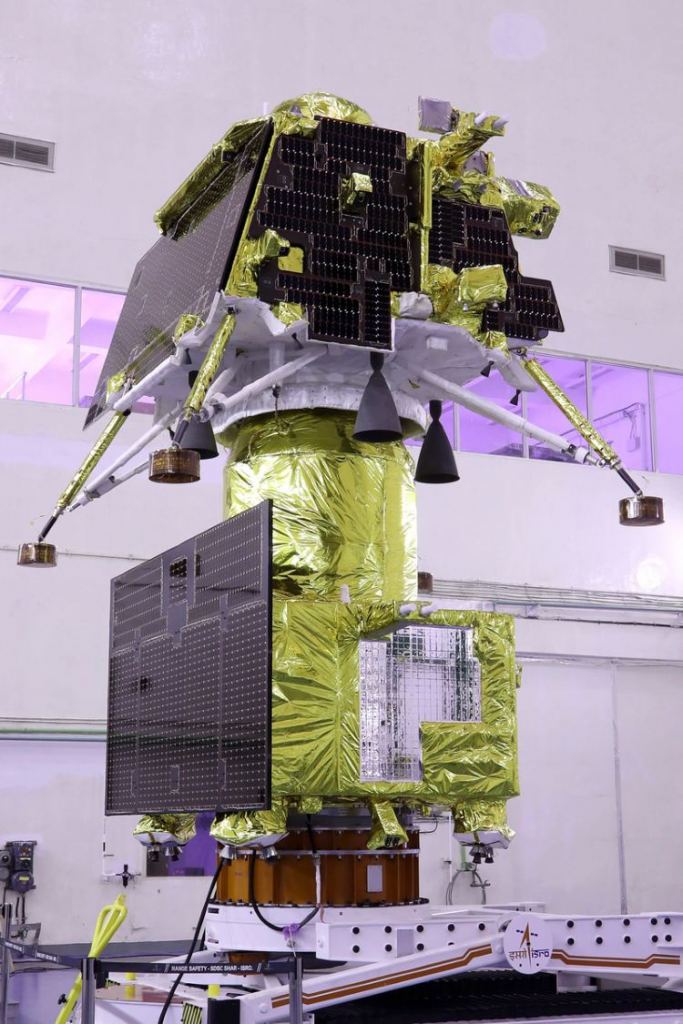India’s space agency successfully landed their Chandrayaan-3 lander on the lunar surface, becoming the fourth country to touch down on the Moon and the first to land at one of the lunar poles.
The Indian Space Resource Organization’s (ISRO) Chandrayaan-3 launched last month and made a soft landing on the Moon’s south pole at approximately 8:34 a.m. ET on August 23. The mission is set to begin exploring an area of the Moon that is of extreme interest, but Chandrayaan-3 is the first to visit this area in-situ. The lunar south pole is thought to contain water ice that could be a source of oxygen, fuel, and water for future missions, or perhaps even for a future lunar base or colony.
 The Chandrayaan-3 team celebrates after the mission successfully landed on the Moon’s south pole. Via ISRO webcast.
The Chandrayaan-3 team celebrates after the mission successfully landed on the Moon’s south pole. Via ISRO webcast.The landing comes just days after a Russian lunar mission failed, and four years after the ISRO’s Chandrayaan-2 lander crashed on the Moon on September 6, 2019, due to a last-minute guidance software glitch.
“The entire mission operations right from launch until landing happened flawlessly, as per the timeline,” said the mission’s project director P. Veeramuthuvel following Chandrayaan-3’s successful landing. “I take this opportunity to thank navigation guidance and control team, propulsion team, sensors team, and all the mainframe subsystems team who have brought success to this mission. I also take the opportunity to thank the critical operations review committee for thoroughly reviewing the mission operations right from launch till this date. The target was on spot because of the review process.”
A team from the Jet Propulsion Laboratory has been providing navigation and tracking support for ISRO through NASA’s Deep Space Network since the launch on July 14, 2023, as well as mission support during the years leading up to launch. NASA and ESA also are providing deep space communication support to the Chandrayaan-3 mission.
Chandrayaan-3’s Vikram lander will deploy a rover named Pragyan to help gain insights into the lunar surface composition and look for the presence of water ice in the lunar regolith, while studying the history of impacts on the Moon and the Moon’s atmospheric evolution. The mission is expected to last for one lunar day (14 days on Earth), and the rover will carry out a number of scientific experiments including a spectral analysis of the minerals on the lunar surface.
 The Chandrayaan-3 Integrated Module with the Vikram lander plus Pragyan rover (top) and the Propulsion Module (bottom). (Credit: Indian Space Resource Organization)
The Chandrayaan-3 Integrated Module with the Vikram lander plus Pragyan rover (top) and the Propulsion Module (bottom). (Credit: Indian Space Resource Organization)“This will remain the most memorable and happiest moment for all of us, for our team,” said associate project director Kalpana Kalahasti, during a livestream following the landing. “We have achieved our goal flawlessly, from the day we started rebuilding our spacecraft after the Chandrayaan 2 experience. It has been breath in breath out for our team! This has been possible only because of the immense effort from our Chandrayaan-3 team. Thank you for all the help that has been provided from all the departments.”
India’s Prime Minister Narendra Modi tuned in to the livestream of the landing, and addressed the team.
“All the people of the world, the people of every country and region: India’s successful Moon mission is not just India’s alone … this success belongs to all of humanity,” Modi said, speaking on the ISRO webcast of the event. “We can all aspire for the Moon, and beyond.”

